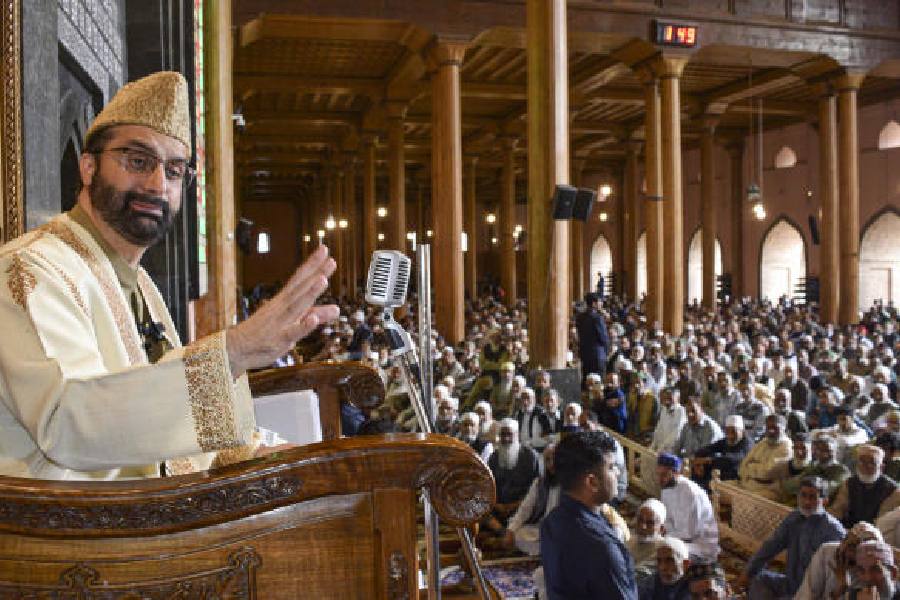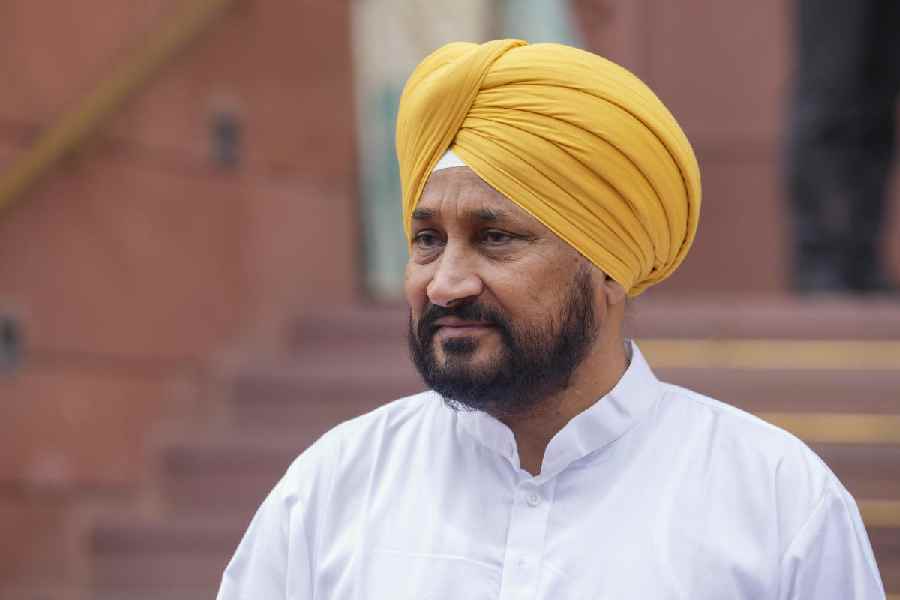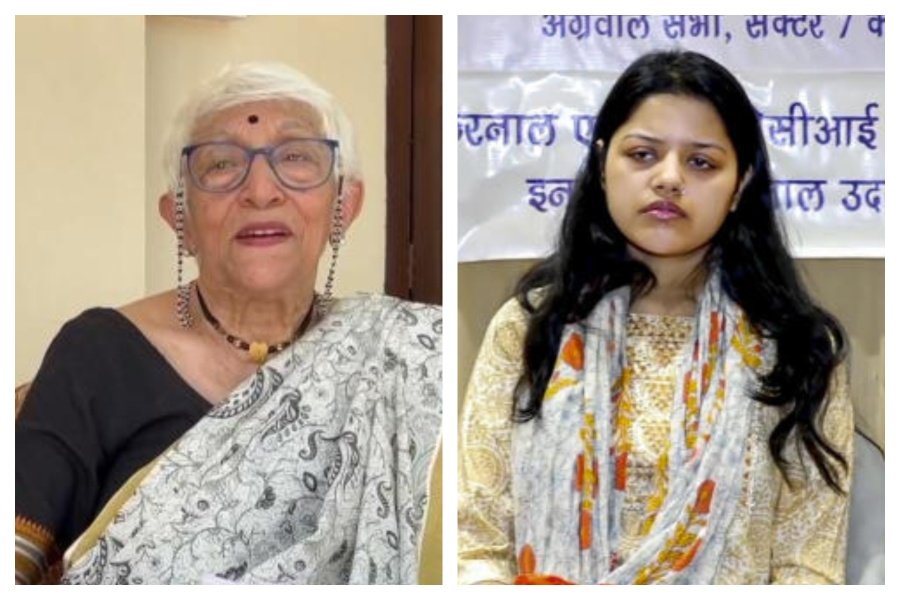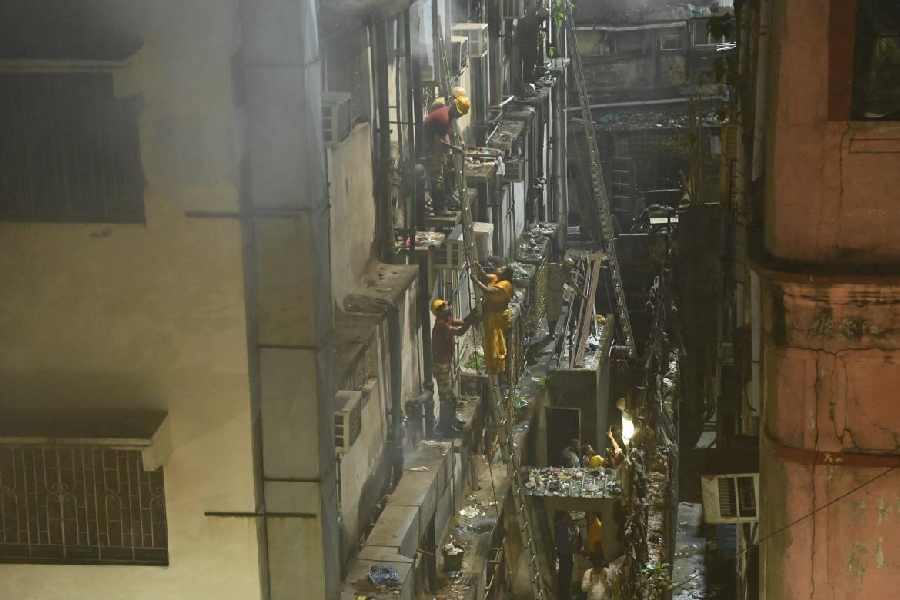|
|
| Sangeeta Shankar |
Every year, a music festival is held in Bangalore around Ram Navami. It takes place in Basavanagudi, in the heart of the old city, under a shamiana in the grounds of the Fort High School. The artistes are mostly of the Southern or Carnatic tradition, but occasionally a Hindustani musician is invited to perform. During the Ram Navami festival of 1998, I took an older friend with whom I often exchanged cassettes for what turned out to be the last concert he ever attended.
The artiste that evening was the violinist, N. Rajam, who was reared in the Tamil country, in a family of musicians. Where her brother T.N. Krishnan took to playing the violin — superbly — in the Carnatic style, Rajam travelled all the way to Banaras to learn Hindustani music under the tutelage of the great vocalist, Omkarnath Thakur. After her studies she stayed on in the holy — if polluted — city, and joined the music faculty of the Banaras Hindu University, where she taught the violin to girls and boys from (one presumes) all parts of the country.
Rajam is a little lady, who was dressed that day — in deference to her audience — in Kanjeevaram, rather than Banaras, silk. She also wore, as I recall, rather a lot of jewellery. But once she started playing, it was our aural sensibilities that took over. She really is a brilliant violinist, with a very wide range and a sensitive, smooth touch, which must come from being trained originally in the Carnatic tradition. (For some reason, violinists from the north tend to have a more jerky style.) I cannot recall what she played that day, although I would like to think (for reasons that will soon be apparent) that it was Gorakh Kalyan. Anyway, what I do distinctly remember is that halfway through her recital it began to rain. As the shower got heavier, Rajam’s violin got louder. She matched and eventually overcame the sound of the water hitting the shamiana’s roof, till, in the end, the rain stopped, exhausted. The violinist celebrated her victory over the elements with a concluding dhun.
I had heard Rajam once before, in the Kamani auditorium in New Delhi. I have not heard her live since, but do possess several of her CD’s, among them a Mian ki Malhar and a Gorakh Kalyan. I also have a wonderful jugalbandi of her and her fellow Banarasi, the shehnai vadak Bismillah Khan, playing Durga. Now that Bismillah, Ali Akbar Khan and Nikhil Banerjee are all dead, I think I can say that N. Rajam is my favourite living instrumentalist.
The Bangalore Ram Navami festival started in the 1930s. A younger, but no less robust, festival is the Yuva Ustav run by the Bangalore-based singer, Lalita Ubhayaker. An accomplished vocalist trained in the Agra style, Ubhayaker is a generous and public-spirited lady, who, some two decades ago, started an annual festival to showcase younger musicians. This is held in a hall off Sankey Road, named after the legendary Carnatic violinist, T. Chowdiah.
The Yuva Utsav features singers and instrumentalists who are less than 25 years of age. However, just as the Ram Navami festival varies its fare by inviting the odd Hindustani musician, Ubhayaker’s festival has, of late, had one slightly older artiste, with the caveat that this person should have previously performed at the Yuva Utsav when they were young and obscure. In recent years, this role has been assigned to, among others, the vocalists, Rashid Khan and Kaushiki Chakrabarty.
At the last Yuva Utsav, the violinist, Sangeeta Shankar, was asked to play on the final evening. I rearranged my travels so as to be in town that day, since the lady in question is the daughter of N. Rajam, and I had in my possession a CD of the two playing together. A teenage vocalist was to sing before the interval, with the prodigy now come good, Sangeeta Shankar, scheduled to perform after the break. Normally, the first act would have comprised a single khayal and a single thumri or bhajan. As the thumri was coming to an end, I saw some agitated whispering in the front row, between Lalita Ubhayaker and one of her colleagues. This was followed by a note to the youngster on the dais, which, it turned out, had asked him to sing for another 15 minutes (an opportunity he was naturally happy to accept).
The boy who was singing was talented, if not wholly mature. No one in the hall that day grudged him his turn, but few wanted it unduly extended. The crowd was polite, but some murmurings began when it was announced, at the end of the youngster’s second or third thumri, that there would be an interval of 20 minutes (instead of the normal 10). At the break, I was given the inside story by Tara Chandavarkar, a close friend of Lalita Ubhayaker, and a well-known patroness of the arts herself. Apparently, on the flight over from Banaras (via Delhi), Sangeeta Shankar’s violin had been damaged. A substitute instrument was needed — where, at this short notice, would it be found?
Someone — it may have been Ubhayaker herself — remembered that there was a Carnatic violin teacher who lived in the back lanes of Sadashivanagar, behind the Chowdiah Memorial Hall. Sangeeta Shankar was taken by her accompanist for the evening, the Bangalore-based tabla player, Ravindra Yavagal, to borrow a functioning violin from this man, who was a Mr Ganapathy, I believe. In Chandavarkar’s (colourful yet probably accurate) rendering, the portly, cheerful Yavagal took the silk-sari-clad Sangeeta Shankar on the back of a bicycle to the local violinist’s house. There the instrument was seen, tested, borrowed and conveyed back to the grand hall where she was to play.
The concert started without a word of explanation for the delay. Shankar played an exquisite and elaborate Gorakh Kalyan, then a dhun or two. At the end of her concert, she acknowledged the applause by saying, “God came to my rescue today.” That was a somewhat enigmatic summing-up of what must have been a very harrowing couple of hours indeed.
This incident happened several months ago. I was prompted to write about it now by reading an essay by the journalist, Robert Fisk, about a flight he once took from Paris to Beirut. On board with him was the great cellist, Mstislav Rostropovich. The musician sat on seat 1J; beside him, on seat 1K, was his precious and irreplaceable instrument. Rostro- povich told Fisk that this was how he always travelled — with one seat in first class booked for himself, and another for his cello.
The violin is a much smaller instrument than the cello. Rostropovich was a larger-than-life Russian, whereas Shankar, like her mother, is a South Indian lady with an understated personality. To book a separate seat for her violin would be sheer exhibitionism. But perhaps she should henceforth carry a spare violin with her. Not every city she shall perform in has an obliging Mr Ganapathy, or a Mrs Ubhayaker who knows where to find him.











